table of contents:
Tired of dropped stitches, frayed fabrics, or broken needles? The secret to flawless sewing often lies in one crucial, yet often overlooked, detail: choosing the right needle! Wondering which needle for which fabric? Forget the headaches, because this article will transform the way you sew.
Together we'll explore the world of machine needles , showing you how each type is designed to tame a specific fabric, from the most delicate silks to the most robust jeans. Get ready to say goodbye to hassle and hello to perfect creations!
The universal needle for versatile sewing
The universal needle is suitable for most sewing tasks. Its standard flat shank fits domestic sewing machines and its slightly rounded point passes through the fibers without breaking them, ensuring smooth penetration to avoid damage to the fabric .
It is suitable for woven fabrics such as cotton, linen, and some lightweight denims. It can also be used for sewing synthetic materials such as polyester. Each size adjusts to the thickness of the material for smooth, even sewing.
If you're wondering which needle to choose for which fabric, the universal needle is a great base for a wide variety of projects. Easily find all the needle types you need for your sewing project at Verotex.
This table shows the comparison of universal needle sizes (NM) according to fabrics and practical recommendations for optimal sewing.
|
Needle size (NM) |
Fabric type |
Features and recommendations |
|
NM 60-70 |
Very fine fabrics (batiste, chiffon, crepe, organza, silk, voile) |
Preserves delicate fibers, prevents excessive perforations. |
|
NM 70-90 |
Light to medium weight fabrics (cotton, poplin, taffeta, lace, nylon, chiffon, seersucker) |
Perfect balance between precision and resistance. |
|
NM 80-100 |
Medium to heavyweight fabrics (jacquard, loden, flannel, double-face, gabardine) |
Suitable for projects requiring a |
|
NM 90-120 |
Thick and stiff fabrics (sailcloth, canvas, oiled cotton, coat fabrics) |
Reinforced structure for crossing |
|
NM 100-130 |
Very thick or layered fabrics (carpets, blankets, work clothes) |
Extreme strength for demanding projects. |
The slightly rounded tip glides between the fibers without damaging them. In addition, it prevents holes or pulled stitches, especially on knit fabrics. This design allows for smooth sewing on cotton, canvas, or poplin.
Choose a needle specifically for very thick, thin, or stretchy fabrics, as the 80/12 universal needle wears out after 8 to 10 hours of use. Uneven stitches or brittle threads are a sign that it's time to change it .
At Verotex you will find all types of needles and fabrics for successful sewing.

Jersey/Stretch needle for stretch fabrics
The Jersey needle has a slightly rounded point, while the Stretch needle has an ultra-rounded point and a reinforced shank. Their specific design allows you to sew without damaging stretch fabrics , by sliding between the stitches rather than piercing them.
The ball point gently spreads the fibers without perforating them, preserving the elasticity of the material. This technology prevents deformations and skipped stitches. It adapts perfectly to fabrics with elastic weft, ensuring a professional result .
When you're new to stretch fabrics, it can be difficult to know which needle goes with which fabric. That's why it's essential to understand the specifics of each style to avoid sewing mistakes.
The Jersey needle is well suited for fabrics made of:
-
Cotton for lightweight, comfortable fabrics like T-shirts
-
Lycra/Spandex for sportswear and jerseys requiring elasticity
-
Stretch polyester for projects requiring strength and quick drying
-
Ribbed edges for elastic finishes on sweatshirts and sportswear
The Stretch needle has a shorter eye and a deeper hem than the Jersey needle. Choose this needle for very stretchy fabrics like Lycra, and opt for the Jersey needle for classic knits like stretch cotton.
By knowing which needle is right for which fabric, you can avoid skipped stitches, broken threads, and tears. It also helps you achieve smooth, snag-free seams . The right needle reduces friction on the fabric, limiting warping after washing or stretching.
Denim/Jeans needle for thick materials
The Denim/Jeans Needle features a reinforced shank and a very sharp point, and its metal construction withstands high pressures. It passes through tight fabrics without deflection, limiting breakage even on demanding thicknesses .
This type of needle tackles denim, decorative fabrics, or canvas bags without weakening. Its robust design withstands repeated friction and maintains a consistent seam on dense materials without damaging the machine.
When working with such a variety of materials, it is essential to know which needle for which fabric, to avoid common mishaps like skipped stitches or needle breakage.
This needle is ideal for a variety of fabric thicknesses . Besides denim, it can be used on corduroy, oilcloth, heavy gabardine, or faux leather, adapting its strength to each challenge.
Sizes 90, 100 and 110 cover most needs . 90 is for lightweight denim, 100 is suitable for heavy fabrics, and 110 is ideal for complex layering.
Additionally, the 90 slips into denim shirts, the 100 holds jackets and pants, and the 110 handles heavy-duty work. Each size meets a specific level of requirement.
The Denim/Jeans needle excels at topstitching that requires going through multiple layers. Its strong steel supports reinforced seams without deflection, ensuring a consistent thread even in critical areas .

Leather needle for non-woven materials
The sharp point of the leather needle pierces dense materials without damaging them . It is designed for genuine leather and imitation leather. Its specific shape prevents breaking the fibers, preserving the integrity of the material while facilitating smooth penetration.
This type of needle is suitable for thick leather, suede, or soft imitation leather. However, it is not suitable for woven or knitted fabrics , which it could cut. Its rigidity and hardened steel resist friction without deflection.
When starting out in leatherwork, it is essential to understand which needle for which fabric, in order to choose the right tool and avoid damaging sensitive materials.
It guarantees clean stitching on leather, without uneven holes or broken threads, and its precise tip glides between layers without tearing them. You will achieve professional finishes on your leatherwork projects or leather accessories.
Use it with care. Avoid ordinary fabrics in particular and set the stitch length to 3-3.5 mm to limit tearing. A properly fitted needle prevents damage to the machine and the material, ensuring a smooth job .
The Microtex needle for fine and delicate fabrics
The Microtex needle features an extra-fine point and a narrow body to penetrate tight fabrics. Its precise design prevents tearing of the fibers. It is distinguished by its ability to sew the most fragile materials without visible alterations , guaranteeing consistent stitches.
It excels on silk, voile, organza, chiffon and taffeta. If you are working with these materials, opt for sizes 60 to 80/12. Each dimension corresponds to the specific thickness of the fabric, ensuring a smooth passage without unwanted marks .
Its sharp point ensures clean, even stitches on fine fabrics. This tip prevents visible holes or broken threads. The seam remains discreet, preserving the integrity of the fabric while maintaining optimal strength .
On silk, the Microtex outperforms the universal needle. Its fine point pierces the fibers without pushing them back. You avoid pulled threads or snags , unlike the standard needle which damages sensitive materials.

The embroidery needle for decorative threads
The embroidery needle's enlarged eye accommodates thick or multiple threads, and its polished surface reduces friction to prevent fiber damage. This specific opening facilitates threading metallic, fancy, or embroidery threads, adapting its size to special materials.
Decorative threads such as shiny rayon or matte cotton are ideal for this needle . Conventional threads are less suitable, especially for embroidery. The wide eye accepts thick threads (Nm 40) via 100-110 needles, while standard threads (Nm 100) use size 90.
This needle is ideal for intricate designs and decorative topstitching , especially with metallic threads. Its slightly rounded point glides smoothly without tearing the fabric. Sizes 60 to 110 cover projects of varying precision.
Set the thread tension between 2 and 6 for optimal hold and, if the bobbin thread appears straight, adjust it. Test by lifting the bobbin by its thread: it should descend smoothly .
Change the needle every 8 to 10 hours of sewing and never force the fabric with the presser foot down. A properly sized needle prevents breakage , especially on thick fabrics requiring precise sizes.
The Topstitch needle for decorative topstitching
The Topstitch needle is distinguished by its elongated eye (2 mm) and slightly rounded point. Designed for decorative topstitching , it can be used with thick or multiple threads. Its robust structure guarantees a smooth passage even on thick fabrics or multi-directional projects.
It is used for quilting, patchwork or decorative effects with metallic threads. A titled version lasts up to 80 hours of sewing. This needle reduces breakages and skipped stitches while protecting the fabric, ideal for clean and durable finishes .
Understanding which needle is right for which fabric is a game changer: it's the key to clean, precise sewing. By choosing your universal, jersey, denim, or Microtex needles wisely, you can optimize every project.

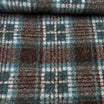
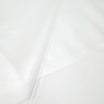
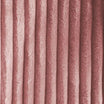
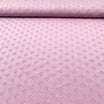
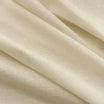
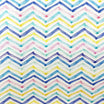
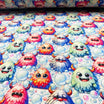
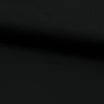
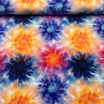
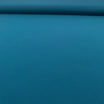

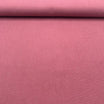
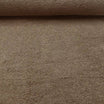

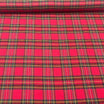
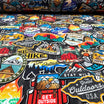
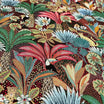
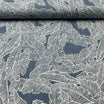
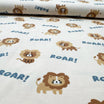
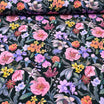
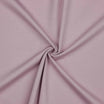
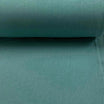
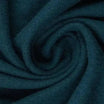
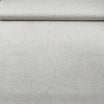
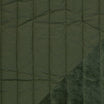
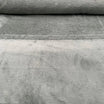
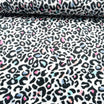
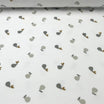
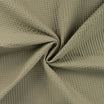
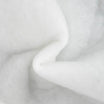
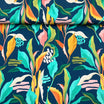
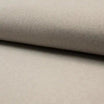
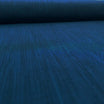
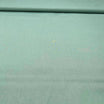
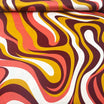
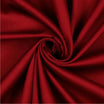
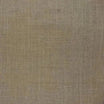
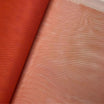
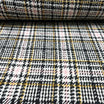
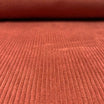
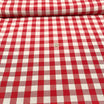

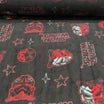
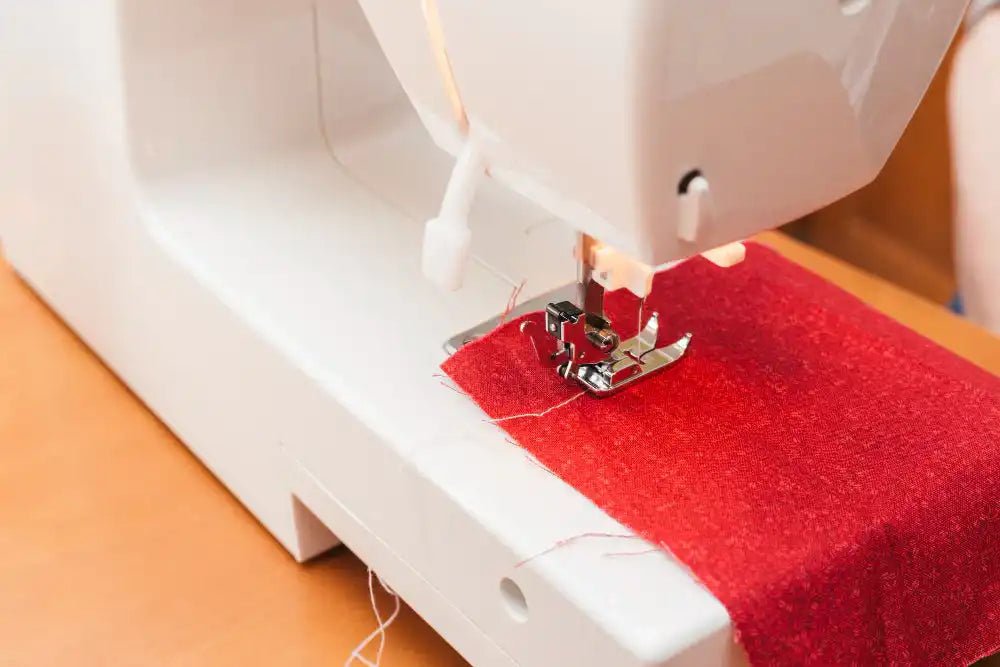


Leave a comment
All comments are moderated before being published.
This site is protected by hCaptcha and the hCaptcha Privacy Policy and Terms of Service apply.